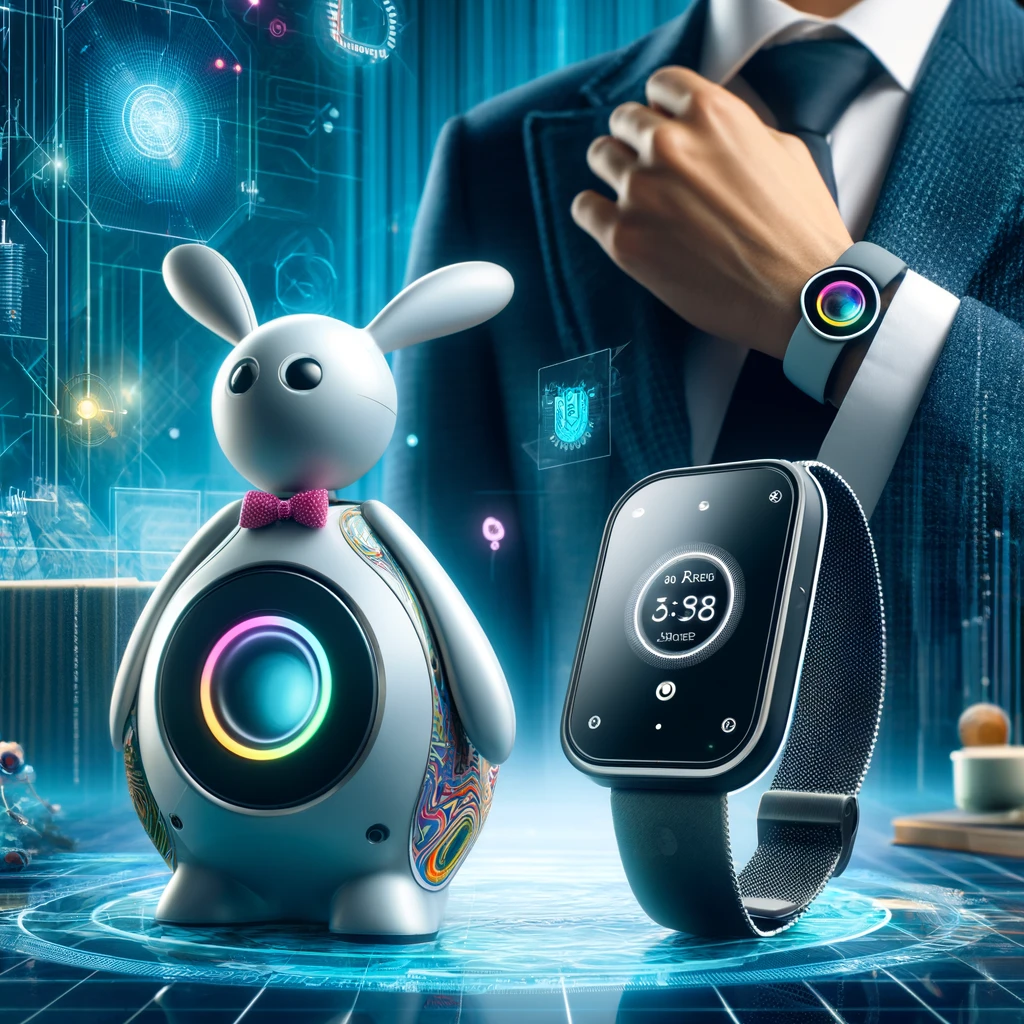The Future of Personal Tech

In the ever-evolving world of technology, two new contenders, the Rabbit R1 and the Humane AI Pin, are making waves by attempting to carve out a new product category entirely. These devices not only showcase the latest in AI advancements but also signal a potential shift in how we interact with technology daily.
Introducing the Contenders
Rabbit R1: Known for its playful design and broad functionality, the Rabbit R1 is designed to be more than just a gadget—it's an experience. With a price tag of $199, it features a 2.88-inch touchscreen and a suite of capabilities facilitated by its voice command system. The R1 is perfect for tech enthusiasts looking for a device with character and diverse functionalities.
Humane AI Pin: Priced at $699, the Humane AI Pin offers a more understated, professional design with a focus on productivity and practicality. It's wearable, enhances daily routines with features like real-time translation and dietary tracking, and integrates seamlessly into both professional and casual settings.
Driving Forces Behind the Innovations
These devices emerge amid growing consumer interest in AI and a marketplace ripe for innovation. The introduction of AI platforms like ChatGPT has spurred a surge in capabilities, making sophisticated personal gadgets more feasible. Moreover, companies are keen on reducing smartphone distractions by offering tools that streamline user interactions, enhancing focus and efficiency.
Addressing Modern Problems
The Rabbit R1 and Humane AI Pin are set to tackle the complexity and intrusiveness of modern devices. By centralizing tools and functionalities, they aim to reduce our reliance on smartphones, promising a step towards better digital wellness. They confront modern issues such as privacy, overly complex user interfaces, and the constant juggling of multiple devices.
Anticipated Challenges
Despite their innovative features, these devices face significant hurdles:
- Market Adoption: Introducing a new category is always challenging, especially when trying to shift users away from the ubiquitous smartphone.
- Functionality vs. Necessity: They must prove they are essential, not just novel.
- Price Sensitivity: Particularly for the Humane AI Pin, its higher price could deter potential users.
- User Readiness: Integrating new tech into daily routines isn't always straightforward.
- Competition with Existing Tech: Many potential users might see these devices as redundant when smartphones already meet their needs.
Who Has the Edge?
While both devices have their merits, the Rabbit R1 might edge out the Humane AI Pin due to its lower cost and the inclusion of a touchscreen, making it more approachable and easier to integrate into daily life. The fun, engaging interface and independence from traditional smartphone functionalities make the Rabbit R1 particularly appealing to those looking for something different in their tech arsenal.
Looking Forward
The success of the Rabbit R1 and Humane AI Pin will depend heavily on their ability to demonstrate real-world utility and integrate smoothly into users' lives. As the tech landscape continues to evolve, these devices represent just the beginning of what could be a significant shift in personal technology. The next few years will be crucial in determining whether these innovations will become staples in our technological repertoire or simply footnotes in the annals of tech history.
In conclusion, keeping an eye on these developments is essential for anyone interested in the trajectory of consumer technology. Whether the Rabbit R1 or the Humane AI Pin—or perhaps both—will succeed in redefining our interaction with technology remains to be seen.